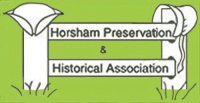Henry Pratt McKean
This article is based on History of Talamore by Dr James Hilty 100 except where otherwise noted.
Henry Pratt McKean, born January 12, 1866, was the great great grandson of Thomas McKean, signer of the Declaration of Independence, and grandson, on his mother’s side of George Mifflin Wharton, a prominent Philadelphia attorney. Buoyed by inherited wealth and high social status, H. P. McKean became a financier, clubman, skilled horseman, and widely known “gentleman” socialite in New York, Washington and London100. He was a descendant of Samual Carpenter through his Wharton lineage132 – Joseph Wharton had married Hannah Carpenter around 1730.133
John Adams described Thomas McKean as “one of the three men in the Continental Congress who appeared to me to see more clearly to the end of the business than any others in the whole body.” He outlived all but five signers of the Declaration and eventually acquired a fortune through investments in US bonds, foreign shipping, and real estate. To commemorate his contributions, McKean County, Pennsylvania is named after Thomas McKean, as is McKean Street in Philadelphia (originally McKean Parkway from Moyamensing to Broad Street) 100

McKean’s father, Thomas, in 1869, hired Frank Furness, who was then with the firm Fraser, Furness & Hewitt, (other sources give credit to another prominent architect, Wilson Eyre, Jr.)103 to build a néo-grec residence for his family at 1925 Walnut Street in Philadelphia. He was apparently “so pleased with the one he had constructed that he had a copy of it constructed for his son. The houses were built with doors in the party wall to allow them to combine the first floors into a single large ballroom.” This second home, at 1923 Walnut St was known as the H. Pratt McKean house. (Henry was only three at the time of the construction).
The home at 1923 Walnut Street was purchased in 1890 by one of the wealthiest men in Philadelphia, Edward T. Stotesbury, who made numerous renovations including the addition of a large ballroom. Although described by some as the grandest townhouse on the East Coast, Stotesbury eventually wanted something bigger and went on to build Whitemarsh Hall. The Stotesbury Mansion at 1923, the former H. Pratt McKean House, is now listed on the National Register of Historic Places and is owned by the Philopatrian Society.103

Henry Pratt McKean attended St. Paul’s School from 1878 to 1883 and is a member of the Form of 1884131. He graduated from Harvard in 1889.100
McKean married Marian Shaw of Brookline, Massachusetts in 1889, From 1889- they lived in a large house on Pulaski Avenue, Germantown, described in the newspapers as a “country estate. This home, known as Fern Hill and the Henry Pratt McKean House, was designed in 1852 by John Notman, “one of America’s most important early architects.” Notman introduced Italianate to American design and also developed American Gothic.128 Here Notman decided to use Richard Upjohn’s double tower plan. The original owner – name unknown – had a typical Victorian love of rare plants. His house was noted for showcasing his collection of uncommon flowers and shrubs.129 Fern Hill was the representative estate of the district. If not the oldest, it was one of the largest and most beautiful country seats, and in the late 19th century the grounds were open on Sundays and Holidays to the public. The house was torn down in the 1950s131 but the grounds were recently opened as a public park under the Fairmount Park Commission.

Despite the magificence of Fern Hill, the McKeans – like other wealthy Philadelphians – sought to move even farther from the city to escape the omnipresent smoke and grime.

Ambler-Penllyn Area
The Ambler-Penllyn area held particular attraction, as it became increasingly accessible. By the 1880s the Reading Railway lines extended into the Gwynedd Valley and by 1902 trolley lines connected Philadelphia and its suburbs, linking Flourtown to Ambler, Spring House, and the William Penn Inn. A few businesses relocated to the area and several socially prominent Philadelphians purchased open farmland and built summer estates nearby.100
Ambler experienced a notable growth spurt after 1881 when Henry Keasbey and Richard V. Mattison relocated their pharmaceutical business from Philadelphia to Ambler. Keasbey and Mattison eventually became the world’s largest manufacturers of asbestos products. Reflecting the opulence of the times, Richard V. Mattison’s Ambler mansion, “Lindenwold”was modeled after Windsor Castle (now the St. Mary’s Villa) and in 1891 he added a church and an opera house to Ambler’s burgeoning inventory of classic architecture. Others who built impressive mansions in the area included William Singerly, owner of the Philadelphia Record, who built “Record Farms” (now Normandy Farms). Brewmaster George Rieger built a mansion on Blue Bell-Penllyn Pike (now Silverstream Retirement Home), as did financier Henry B. Coxe (now Beth Or synagogue). Financier Francis Bond hired Horace Trumbauer to design a spectacular residence on his 250-acre estate on Sumneytown Pike (now the main building at Gwynedd-Mercy College). 100
Wealthy Philadelphians, such as the Ingersoll, Smith, and Vaux families, were already ensconced in Penllyn, deeply engrossed in a social competition of conspicuous consumption, each determined to acquire Penllyn’s best land to built enormous chateaus and country estates. With most of the choicest properties already taken, McKean looked just beyond Gwynedd’s edges into Horsham Township.100
At the time, Penllyn generically described all of the desirable areas within and adjacent to Gwynedd Township. As Polly King (Miller), a long-time Gwynedd resident explained, “Penllyn is what we called this whole area of Gwynedd.” Specifically, Penllyn referred to the interconnected estates extending from Horsham to Whitemarsh that permitted the “horsey set” to ride to the hunt from one property to the next. Horses and cross-country riding were Henry McKean’s enduring passions, and so Penllyn was an ideal locale for his entry in the ostentatious estate derby. Seeking something impressive to suit the tastes and lifestyle of his highbred Boston wife, Henry Pratt McKean and his agents assembled several parcels of land in Horsham Township along Welsh Road in 1894.100
The estate ran from a point about a half-mile West of Hughes Road (now Tennis Avenue) to what was then called Creamery Road (now McKean Road), including 89 acres from William Wilson, 96 acres from Clement Comly, 10 acres from Jesse Seaman, and 10 acres from Thomas Marks. McKean named his estate Pine Run Farms. (Some sources call this estate “Pine Run Farm”100 and others “Fox Run Farm.”127).
The Comly farm, the most developed of the four properties, became the physical core of Pine Run Farms. Clement Comly was the son of Phoebe Kneedler, whose grandfather, Jacob Kneedler in 1791 built an imposing stone “homestead” on the “upper farm” either directly on or very near the site of what became the McKean manor house. In 1894 the McKeans took up residence on the property, apparently moving into the renovated Kneedler-Comly house.10
Henry Pratt McKean named his manor house “Pine Ridge.” apparently because the house was built on the upper ridge of the Comly farm bordered by a line of pines, likely planted by McKean, some of which still stand. Pine Ridge is a gothic styled country mansion following the shape of luxurious English manor houses, with two large wings framing an open courtyard and carriage turnaround in the front. In 1986 Professor George Thomas, a distinguished architectural historian at the University of Pennsylvania, described the McKean manor house as “one of the last surviving and best preserved grand houses of the turn of the century in the Philadelphia region.” The building, according to Thomas, was “probably” designed by noted architect Horace Trumbauer and erected “around 1904, or another explanation is that the McKean manor house may not be an original design at all, but rather, an expensive expansion and renovation of the Kneedler-Comly farmhouse.100
More about Pine Ridge Farm

McKean’s coaches and coach horses were kept on a separate farmstead called “Cold Spring Farm” which was located on the former Rowland Hugh property (now the van Steenwyk residence) a few hundred feet from Tennis Avenue (next to Talamore’s fourteenth green). Cold Spring Farm consisted of the former Hugh house, where McKean’s teamsters and carriage drivers lived, a springhouse, water tower, various sheds and outbuildings, and a large hay barn whose footprint was about three times the size of the house. A roadway through the property paralleling Welsh Road and a bridge across Park Creek connected Cold Spring Farm to the main residence. Water from Cold Spring Farm was pumped through pipes over four thousand feet to the estate from the water tower (still standing) that drew and stored water from the highly productive spring next to the Hugh House. Today, only the Hugh House and water tower remain of what was once Cold Spring Farm. The huge barn was destroyed in a spectacular fire in 1976.100
Events Around the Township
See what’s happening in Horsham. Check out our calendar of events or plan your own event at our historic Penrose-Strawbridge House.
Help us preserve Horsham. Learn about membership and sponsorship with HPHA.
Discover the benefits of preservation.


